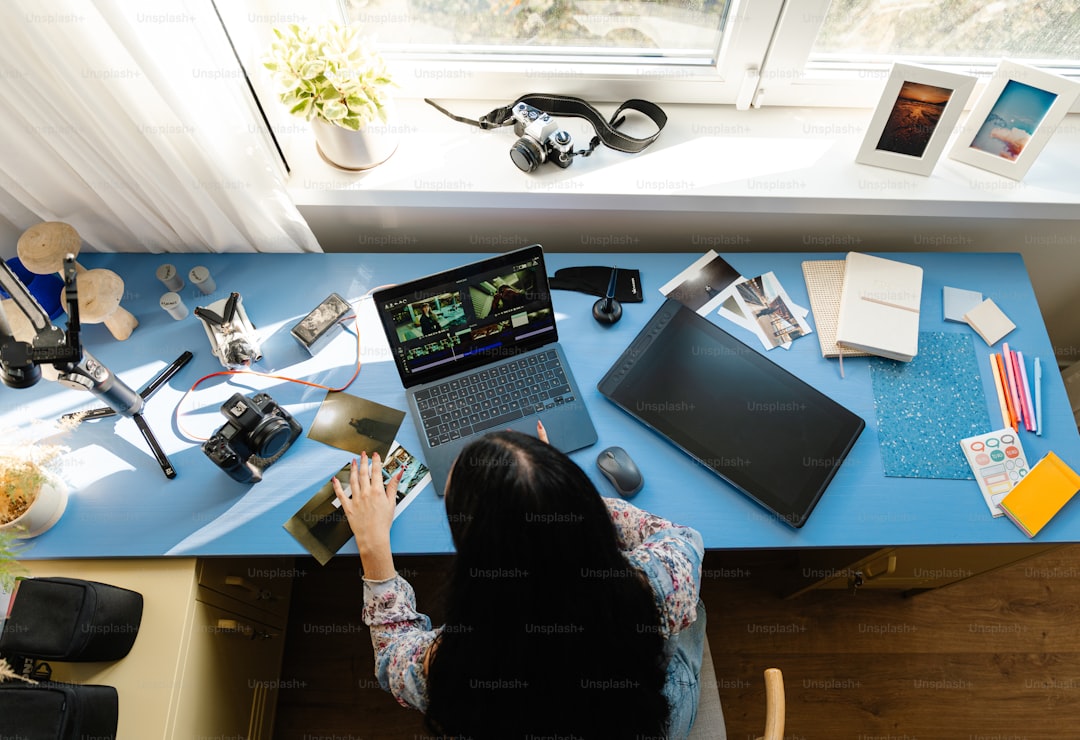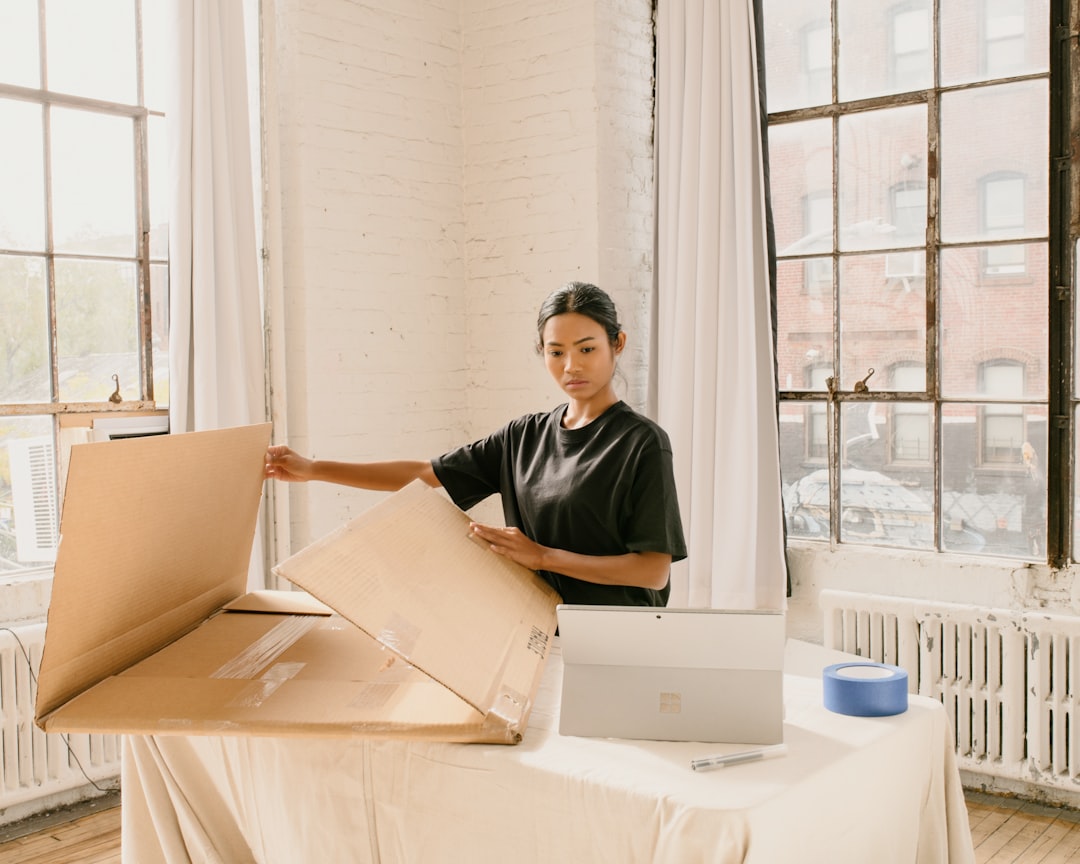Explore Latin America’s Best Digital Nomad Cities

Introduction
The digital nomad lifestyle is built on freedom, curiosity and the ability to work from anywhere with a reliable internet connection. Latin America has become a magnet for remote professionals seeking a blend of vibrant culture, affordable living and natural beauty. From the bustling streets of Mexico City to the mountain‑side cafés of Medellín, the region offers a diverse palette of destinations that cater to different work styles, budgets and adventure appetites.
In this guide we explore the standout cities that consistently rank among the best places for digital nomads in Latin America. We look beyond the typical travel checklist and dive into the practicalities that matter to remote workers: coworking infrastructure, cost of living, internet reliability, visa options, safety, and community vibe. Whether you are a solo freelancer, a startup founder or part of a distributed team, these cities provide the ingredients for a productive and inspiring nomadic experience.
Why Latin America Appeals to Remote Workers
Affordable Cost of Living
Compared with many European or North American hubs, most Latin American cities allow a comfortable lifestyle on a modest budget. Rent, food and transportation are often a fraction of the price you would pay in cities like Berlin or Toronto. This affordability translates into the freedom to upgrade your living standards, enjoy more leisure activities or extend your stay without breaking the bank.
Time Zone Advantages
Latin America sits in time zones that overlap conveniently with both North America and Europe. For remote teams that need to coordinate across continents, cities such as Bogotá (UTC‑5) or Santiago (UTC‑3) enable real‑time collaboration during regular business hours in the United States and early afternoon meetings with European partners.
Rich Cultural Landscape
From tango halls in Buenos Aires to street art in Valparaíso, the cultural fabric of Latin America is vibrant and varied. Nomads can immerse themselves in local festivals, culinary traditions and historic neighborhoods, turning everyday life into a continuous learning experience.
Growing Nomad Infrastructure
In recent years, governments, investors and entrepreneurs have recognized the economic potential of attracting remote talent. As a result, many cities now offer dedicated coworking spaces, networking events, and even special visa programs designed for digital nomads.
Key Criteria for Choosing a Nomad City
When evaluating potential bases, remote workers typically consider the following factors:
- Internet Speed and Reliability – Consistent broadband speeds of at least 15 Mbps download are essential for video calls and cloud‑based work.
- Coworking Options – A variety of spaces with flexible membership plans, good ergonomics and community events enhance productivity and social interaction.
- Cost of Living – Balanced budgets that cover accommodation, meals, transport and leisure without sacrificing quality of life.
- Safety and Healthcare – Low crime rates in tourist areas, reliable emergency services and accessible medical facilities.
- Visa Flexibility – Short‑term tourist visas, digital nomad visas or extended residency permits that simplify legal stays.
- Lifestyle Fit – Climate, outdoor activities, nightlife and cultural offerings that align with personal preferences.
Each city highlighted below scores strongly across these dimensions, making them top choices for digital nomads exploring Latin America.
Medellín, Colombia
Overview
Nestled in the Andes, Medellín has transformed from a city once associated with conflict into a beacon of innovation and urban renewal. Known as the “City of Eternal Spring” for its mild climate, it offers a perfect blend of modern amenities and Latin American charm.
Coworking Scene
The city boasts a thriving coworking ecosystem. Spaces such as Selina Co‑working, WeWork, Atom House and Impact Hub provide high‑speed internet, private phone booths and regular community workshops. Many locations are situated in historic districts like El Poblado, allowing easy access to cafés and restaurants.
Cost of Living
A one‑bedroom apartment in a central neighborhood averages $500 USD per month. Utilities and internet add around $60 USD. Eating out is affordable; a typical lunch at a local “parqueadero” costs $5 USD, while a dinner at a mid‑range restaurant is about $12 USD. Monthly groceries for a single person hover near $150 USD.
Internet and Connectivity
Fiber optic coverage is extensive. Most coworking spaces report download speeds of 40‑70 Mbps, and many residential complexes offer similar performance. Mobile data plans are cheap, with 10 GB packages for $15 USD.
Safety
Medellín’s security has improved markedly. Tourist areas such as Laureles and Envigado are considered safe during daylight hours. As with any urban environment, it is advisable to keep belongings secure and avoid poorly lit streets at night.
Visa Options
U.S., Canadian and EU citizens can stay visa‑free for up to 90 days. Colombia also offers a Digital Nomad Visa that permits stays of up to two years for remote workers earning a minimum monthly income of $2,000 USD.
Lifestyle
Beyond work, Medellín offers cable‑car rides up to Parque Arví, salsa dancing nights, and a vibrant art scene. The nearby coffee region provides weekend getaways to plantations and mountain trails.
Buenos Aires, Argentina
Overview
Often called the “Paris of South America,” Buenos Aires pulsates with tango, literature and a café culture that encourages lingering over a cortado. Its European‑styled avenues, eclectic neighborhoods and passionate locals make it a magnet for creatives.
Coworking Scene
Spaces like La Casa del Libro, Urban Station, Coco Work and WeWork dominate the downtown and Palermo districts. Many offer 24‑hour access, rooftop terraces and regular networking events that attract freelancers, designers and tech startups.
Cost of Living
A central one‑bedroom apartment costs roughly $600 USD per month. Utilities and high‑speed internet add $70 USD. Dining out is reasonably priced; a typical empanada snack is $2 USD, while a three‑course dinner at a trendy restaurant is about $20 USD. Monthly groceries average $180 USD.
Internet and Connectivity
Broadband speeds in central neighborhoods range from 30‑50 Mbps. Mobile carriers provide generous data bundles; a 15 GB plan costs $20 USD.
Safety
While Buenos Aires is generally safe in tourist zones such as Recoleta, Palermo and San Telmo, pickpocketing can occur in crowded areas. Using reputable taxis or ride‑sharing apps is recommended after dark.
Visa Options
Citizens of many countries can enter Argentina visa‑free for up to 90 days. The country also offers a Temporary Residence Visa for remote workers earning at least $2,500 USD per month, allowing stays of up to one year with the possibility of renewal.
Lifestyle
Nomads can explore tango shows, visit the historic Teatro Colón, or stroll through the colorful streets of La Boca. The city’s proximity to the Pampas and the Atlantic coast provides weekend escapes for horse riding, beach trips or wine tours in Mendoza.
Mexico City, Mexico
Overview
Mexico City is a sprawling metropolis that blends ancient ruins with cutting‑edge gastronomy and a burgeoning tech scene. Its 9 million‑plus residents create a dynamic environment where tradition meets innovation.
Coworking Scene
The city’s coworking landscape is extensive. Notable spaces include WeWork, Coffice, Homework, Público and Impact Hub. Many are located in neighborhoods such as Roma, Condesa and Polanco, offering modern amenities and vibrant community calendars.
Cost of Living
A one‑bedroom apartment in a central area averages $800 USD per month. Utilities and internet together cost about $80 USD. Street‑food tacos are $1 USD each, while a dinner at a contemporary Mexican restaurant runs $25 USD. Groceries for a single person are roughly $200 USD per month.
Internet and Connectivity
Fiber networks deliver speeds of 50‑100 Mbps in most central districts. Mobile data is affordable; a 20 GB plan is $25 USD.
Safety
Mexico City has safe zones such as Polanco, Roma, Condesa and Coyoacán. As with any large city, it is prudent to remain aware of surroundings, avoid isolated areas at night and use authorized transportation services.
Visa Options
Tourist visas allow stays of up to 180 days for many nationalities. Mexico also introduced a Digital Nomad Visa granting a one‑year residence permit for remote workers earning a minimum of $2,000 USD per month, with the possibility of renewal.
Lifestyle
Cultural highlights include the Frida Kahlo Museum, the ancient Templo Mayor ruins and a thriving street‑art scene. The city’s extensive metro system makes commuting easy, while nearby lakes and volcanoes offer weekend hiking and kayaking opportunities.
Santiago, Chile
Overview
Santiago sits at the foothills of the Andes, providing a crisp, cosmopolitan atmosphere with a reputation for safety and order. The city’s modern infrastructure and strong economic base attract many tech entrepreneurs and remote professionals.
Coworking Scene
Top coworking venues include WeWork, Korner, Co‑Work Latam, The Venture and Station Coworking. These spaces often feature glass‑fronted offices with panoramic mountain views, high‑speed internet and regular pitch nights for startups.
Cost of Living
A central one‑bedroom apartment costs around $700 USD per month. Utilities and internet add $80 USD. Eating out ranges from $5 USD for a fast‑casual lunch to $18 USD for a dinner at a bistro. Monthly groceries are roughly $170 USD.
Internet and Connectivity
Broadband speeds exceed 70 Mbps in most neighborhoods. Mobile carriers offer 15 GB plans for $20 USD, and 4G coverage is extensive throughout the metropolitan area.
Safety
Santiago consistently ranks among the safest major cities in Latin America. Tourist districts such as Providencia, Las Condes and Bellavista have low crime rates. Standard precautions—avoiding flashing valuables and staying in well‑lit areas—remain advisable.
Visa Options
Citizens from many countries can stay visa‑free for up to 90 days. Chile introduced a Digital Nomad Visa that permits stays of up to two years for remote workers with a minimum monthly income of $2,500 USD.
Lifestyle
Nomads can ski in the Andes during winter, hike in the nearby Cajón del Maipo, or explore vineyards in the Maipo Valley. The city’s cultural calendar includes film festivals, contemporary art exhibitions and a lively nightlife scene.
Lima, Peru
Overview
Lima, the “City of Kings,” is a coastal metropolis where colonial architecture meets cutting‑edge gastronomy. Its status as a culinary capital and gateway to historic sites makes it a compelling base for remote workers.
Coworking Scene
Key coworking hubs include UCO, Co‑Work Lima, COW, The Loom and WeWork in San Isidro. These spaces cater to freelancers, digital agencies and remote teams, offering fast internet, meeting rooms and community events.
Cost of Living
A one‑bedroom apartment in Miraflores or Barranco averages $550 USD per month. Utilities and internet cost around $70 USD. A traditional Peruvian lunch, such as ceviche, is $8 USD, while a dinner at a gourmet restaurant is $20 USD. Monthly groceries total about $150 USD.
Internet and Connectivity
Broadband speeds typically range from 25‑40 Mbps. Mobile data packages of 10 GB cost $12 USD, and 4G coverage is solid in most urban districts.
Safety
The districts of Miraflores, Barranco and San Isidro are considered safe for tourists and expats. As in many large cities, it is wise to keep belongings secure and avoid poorly lit streets after dark.
Visa Options
Many nationalities can enter Peru visa‑free for up to 183 days. Peru also offers a Temporary Residence Visa for remote workers earning at least $2,000 USD per month, granting a one‑year stay with the option to renew.
Lifestyle
Beyond work, nomads can explore the historic center, surf the Pacific waves at Punta Hércules, or take weekend trips to the Sacred Valley and Machu Picchu. Lima’s nightlife includes salsa clubs, jazz bars and rooftop lounges overlooking the ocean.
Montevideo, Uruguay
Overview
Montevideo blends European elegance with a laid‑back Atlantic vibe. Its stable political environment, high quality of life and welcoming locals make it an appealing choice for long‑term digital nomads.
Coworking Scene
Spaces such as Sinergia Cowork, Coco Coworking, Coworking Hub, Urbana and WeWork (opened recently) dominate the downtown and Pocitos areas. They provide fast internet, ergonomic furniture and regular meet‑ups for entrepreneurs.
Cost of Living
A one‑bedroom apartment in Ciudad Vieja or Punta Carretas costs around $650 USD per month. Utilities and internet add $85 USD. A typical asado (barbecue) lunch costs $7 USD, while a dinner at a modern restaurant is about $22 USD. Monthly groceries are roughly $180 USD.
Internet and Connectivity
Broadband speeds average 50 Mbps, and mobile data plans of 12 GB cost $18 USD. 4G coverage is reliable across the metropolitan area.
Safety
Montevideo ranks high in safety indexes for South American capitals. Tourist neighborhoods are well‑policed, and violent crime rates are low. Common sense measures—such as not leaving bags unattended—are sufficient.
Visa Options
Citizens from many countries can stay visa‑free for up to 90 days. Uruguay also introduced a Digital Nomad Visa allowing stays of up to two years for remote workers earning a minimum of $2,500 USD per month.
Lifestyle
Nomads can enjoy the rambla—a long seaside promenade perfect for jogging or cycling—along with a thriving cultural scene that includes tango clubs, art galleries and a lively market at Mercado del Puerto. Weekend trips to wine regions like Canelones or beach towns such as Punta Del‑Este are easy to arrange.
Quito, Ecuador
Overview
Set high in the Andes, Quito’s UNESCO‑listed historic centre and crisp mountain air create a unique backdrop for remote work. The city’s blend of colonial architecture and modern amenities attracts many digital creatives.
Coworking Scene
Popular coworking spaces include Co‑Work Ecuador, Coco Space, WeWork, The Factory and Impact Hub Quito. These venues often provide scenic views, fast internet and networking events focused on sustainability and tech.
Cost of Living
A central one‑bedroom apartment costs about $450 USD per month. Utilities and internet together are $65 USD. Street‑food like empanadas costs $1 USD, while a dinner at a mid‑range restaurant is $15 USD. Monthly groceries average $140 USD.
Internet and Connectivity
Fiber coverage delivers speeds of 30‑60 Mbps in most districts. Mobile carriers offer 10 GB data plans for $12 USD, and 4G coverage is strong throughout the city.
Safety
The historic centre and La Floresta are generally safe during daylight. As with any tourist area, it is advisable to watch for pickpockets and avoid isolated streets after dark.
Visa Options
Many nationalities can stay visa‑free for up to 90 days. Ecuador also offers a Digital Nomad Visa that grants a one‑year stay for remote workers earning at least $2,000 USD monthly, with a possible renewal.
Lifestyle
Outside work hours, nomads can explore the city’s many museums, ride the Teleférico for panoramic mountain views, or take weekend hikes in the nearby cloud forests of Mindo. The proximity to the Galápagos Islands makes unique travel adventures feasible.
Panama City, Panama
Overview
Panama City is a modern, high‑rise metropolis famous for the Panama Canal. Its strategic location, robust banking sector and English‑friendly environment make it a magnet for global freelancers and entrepreneurs.
Coworking Scene
Leading coworking hubs include Workings, Selina Co‑working, Co‑Work Panama, Regus and WeWork. They provide high‑speed internet, conference rooms and community events aimed at international professionals.
Cost of Living
A one‑bedroom apartment in the Casco Viejo or Punta Paitilla districts costs around $950 USD per month. Utilities and internet add $100 USD. A local “sancocho” lunch is $6 USD, while a dinner at an upscale restaurant is $30 USD. Monthly groceries total about $220 USD.
Internet and Connectivity
Broadband speeds are among the highest in the region, often exceeding 100 Mbps. Mobile data plans of 20 GB cost $25 USD, and 5G networks are rolling out across the city.
Safety
Panama City is considered safe in most tourist and business districts. Crime is low compared with other large Latin American cities, though it is wise to use authorized taxis or ride‑share apps after dark.
Visa Options
Many visitors can stay visa‑free for up to 180 days. Panama also introduced a Digital Nomad Visa that allows stays of up to two years for remote workers earning a minimum of $3,000 USD per month, with an easy application process that includes proof of employment and health insurance.
Lifestyle
Nomads can explore the historic Casco Viejo, stroll along the Cinta Costera waterfront, or enjoy the city’s thriving nightlife. Weekend escapes include the Pacific islands of San Blas, the rainforest of Boquete or the highland town of El Valle.
Salvador, Brazil
Overview
Salvador, the capital of Bahia, is known for its Afro‑Brazilian culture, colorful colonial architecture and beautiful beaches. The city’s lively music scene and laid‑back atmosphere attract creative remote workers.
Coworking Scene
Key coworking spaces include B2B Hub, Coco Space, WeWork, Impact Hub Salvador and Co‑Work Bahia. They offer reliable internet, meeting rooms and events that celebrate local art and entrepreneurship.
Cost of Living
A one‑bedroom apartment in the Pelourinho or Barra districts costs about $550 USD per month. Utilities and internet together are $70 USD. A traditional “acarajé” snack is $2 USD, while a dinner at a beachfront restaurant averages $18 USD. Monthly groceries are roughly $160 USD.
Internet and Connectivity
Broadband speeds range from 20‑40 Mbps, with mobile 4G data plans of 12 GB costing $15 USD. While not the fastest in Brazil, the connectivity is sufficient for most remote work tasks.
Safety
Salvador’s historic centre and beach neighborhoods are generally safe during the day. As with many Brazilian cities, it is recommended to avoid isolated areas at night and keep valuables out of sight.
Visa Options
Brazil allows many nationalities to stay visa‑free for up to 90 days. The country also offers a Digital Nomad Visa granting a one‑year stay for remote workers with a minimum monthly income of $2,500 USD, renewable for a second year.
Lifestyle
After work, nomads can dance to samba and axé music, explore the UNESCO‑listed Pelourinho, or surf at Praia do Porto da Barra. The nearby Chapada Diamantina National Park provides opportunities for trekking and canyoning on weekends.
Bogotá, Colombia
Overview
Bogotá, perched high in the Andes, combines a bustling metropolitan vibe with a strong cultural scene. Its universities, tech meetups and numerous green spaces make it an attractive hub for digital professionals.
Coworking Scene
Top coworking venues include WeWork, Selina Co‑working, Co‑Work Bogotá, Atom House, Tinkko and Impact Hub. These spaces provide fast internet, private booths and frequent workshops on topics ranging from AI to social entrepreneurship.
Cost of Living
A one‑bedroom apartment in the Chapinero or La Candelaria districts costs around $500 USD per month. Utilities and internet add $65 USD. Street food such as arepas is $2 USD, while a dinner at a contemporary restaurant is $15 USD. Monthly groceries are about $150 USD.
Internet and Connectivity
Broadband speeds typically reach 30‑50 Mbps. Mobile carriers offer 10 GB data plans for $12 USD, and 4G coverage is reliable throughout the city.
Safety
Bogotá’s central districts are safe during daylight hours. It is advisable to use registered taxis or ride‑share services, especially after sunset, and to stay alert in crowded public transport.
Visa Options
Many travelers can stay visa‑free for up to 90 days. Colombia also provides a Digital Nomad Visa that permits stays of up to two years for remote workers earning a minimum monthly income of $2,000 USD.
Lifestyle
Nomads can enjoy cultural landmarks such as the Gold Museum, bike along the Ciclovía on Sundays, or hike the surrounding Andes. The city’s vibrant nightlife, craft breweries and coffee culture ensure a balanced work‑life experience.
Practical Tips for Living as a Digital Nomad in Latin America
Health Insurance
Invest in a reputable international health insurance plan that covers medical emergencies, hospital stays and prescription drugs. Many providers offer plans specifically designed for long‑term travelers and digital nomads. Verify that the plan includes coverage in the countries you intend to visit.
Banking and Payments
Opening a local bank account can simplify bill payments and reduce foreign‑exchange fees. In most major cities, banks such as Banco do Brasil, BBVA, Santander and local credit unions allow foreigners to open accounts with a passport and proof of address. Additionally, digital banking services like N26, Revolut or Wise provide low‑cost international transfers and multi‑currency cards.
Language Basics
While English is spoken in many coworking spaces and tourist areas, learning basic Spanish (or Portuguese in Brazil) greatly enhances daily interactions and helps you negotiate better rental terms. Free language apps, local meet‑ups and community classes are readily available in most cities.
Transportation
Public transit systems—metros, buses and BRT lines—are affordable and efficient in cities like Mexico City, Santiago and Bogotá. Ride‑sharing apps such as Uber, Cabify or local equivalents are convenient for short trips, especially after dark. For weekend getaways, consider regional low‑cost airlines, bus companies, or car‑sharing platforms.
Community Building
Joining local nomad groups on platforms like Meetup, Facebook or Telegram can accelerate the process of finding friends, collaborators and event invitations. Many coworking spaces host weekly “coffee talks,” skill‑sharing sessions and social outings that foster a sense of belonging.
Managing Work Hours
Take advantage of the time‑zone overlap with your clients or teammates. For example, a nomad in Buenos Aires (UTC‑3) can schedule morning calls with New York (UTC‑5) and still have afternoon time for personal activities. Setting clear boundaries between work and leisure helps maintain productivity and prevents burnout.
Staying Safe Online
Use a reputable VPN when connecting to public Wi‑Fi networks, especially in cafes or airports. Keep your devices updated, enable two‑factor authentication on all critical accounts, and back up important files to a secure cloud service.
Legal Considerations
Always keep copies of your visa, passport, travel insurance and rental agreements in both digital and physical formats. Familiarize yourself with local tax obligations—some countries may require filing if you earn income while physically present for a certain period. Consulting a local tax advisor can prevent unexpected liabilities.
Conclusion
Latin America offers a rich tapestry of cities that combine affordability, reliable connectivity, vibrant culture and supportive nomad ecosystems. Whether you are drawn to Medellín’s spring‑like weather, Buenos Aires’ artistic flair, Mexico City’s culinary innovation, or Santiago’s mountain backdrop, each destination presents a unique blend of work‑friendly amenities and adventure‑ready experiences.
By weighing factors such as internet speed, coworking options, cost of living, safety and visa flexibility, you can select the city that best aligns with your professional needs and personal passions. Armed with the practical tips outlined above, you are ready to embark on a rewarding journey across the continent—turning everyday work into an unforgettable exploration of Latin America’s most inspiring digital nomad hubs.
Random Posts

Tax Filing Hacks for Nomads Across Borders
Learn how digital nomads can master tax residency, use treaties, simplify foreign income reporting, and employ banking and crypto tools to stay tax efficient across borders.
1 week ago

The Ultimate Guide to Remote Team Collaboration
Master remote teamwork with proven strategies, tools, and culture tips. This guide shows how to turn distance into advantage, boost productivity, and keep your distributed team happy and high performing.
1 month ago

Nomad Guide to Legal Compliance and Financial Freedom
A practical roadmap for digital nomads that demystifies legal residency, tax obligations, finance planning, and health insurance, giving you a clear plan to stay compliant and achieve true financial freedom
2 weeks ago

Freelance Success Blueprint with Skill Growth and Online Learning
Discover the Freelance Success Blueprint, a clear roadmap that blends strategic planning, productivity habits, and continuous online skill growth so you can attract high paying clients and build a sustainable, adaptable freelance career.
1 week ago

Building a Global Nomad Network Through Meetups
Meetups turn isolated digital nomads into a trusted global network, fostering face-to-face connections, collaborations and mentorship that virtual chats can’t replace.
2 months ago
Latest Posts

Essential Software Every Remote Professional Should Use
Master remote work with essential tools: instant messaging like Slack, high definition video calls such as Zoom, and asynchronous voice apps. Streamline communication, stay connected and boost productivity.
1 day ago

Mastering Remote Work Productivity for Digital Nomads and Freelancers
Learn proven habits, tools, and tactics that help digital nomads and freelancers stay focused, deliver quality work, and maintain a sustainable lifestyle while traveling the world.
1 day ago

Tech‑Friendly European Towns Perfect for Remote Living
Discover Europe’s best small towns where fast internet, affordable living and vibrant tech communities let you work remotely while soaking up historic charm, lakeside views or mountain air.
1 day ago